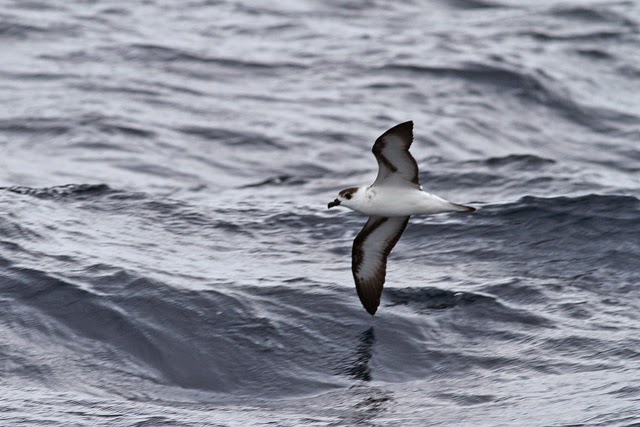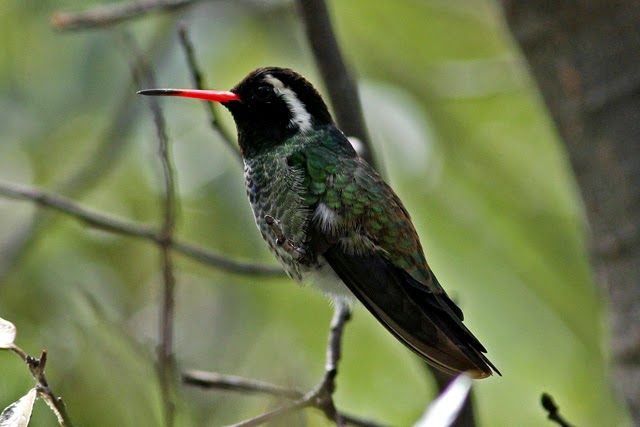 |
| Swinhoe's Storm-petrel at the Bank of Fortune, 20 miles east of Graciosa 27th August 2014 |
The first day (Tuesday 26th August) as predicted was the worst weather wise, and with a decent swell and high seas, it wasn't possible to go too far offshore. However, this was a good excuse to plan on a visit around Ilheu da Praia in the morning. We were in luck with the juvenile seen first - an amazing sight in the WP - and then the two adults were seen. Some excellent shots were taken, but with grey skies and fishy fingers I decided to leave my camera back at the hotel. A Sooty Shearwater was seen too as well as the first Great Shearwaters.
 |
| Great Sheawater off Graciosa 27th August 2014 |
 |
| Monteiro's Storm-petrel at the Bank of Fortune, 20 miles east of Graciosa 27th August 2014 |
 |
| Bulwer's Petrel at the Bank of Fortune, 20 miles east of Graciosa 27th August 2014 |
To add to this a 'Bonxie' caused excitement as this was the first large skua we've seen on August pelagics. Up to three Wilson's Storm-petrels were also well received. A first-summer Pomarine Skua and a couple of Arctic Skuas, a very distant juvenile Sabine's Gull, a handful of Bulwer's Petrels, a Manx and a Sooty Shearwater meant that there was usually something to look at. A Blue Shark around the boat for a while and a load of Bottle-nosed Dolphins added to the diversity of what was, in everyone's opinion, a pretty special day.
Wind had been forecast to get up on Thursday, but with the calm seas the previous day and lack of swell we headed to the Bank of Fortune again. Early signs looked decent, with Bulwer's Petrels and Manx Shearwaters, as well as two adult Long-tailed Skuas, seen on the way out. A Sperm Whale was also seen to surface, as well as both Spotted and Bottle-nosed Dolphins. Perhaps we'd got a little complacent after yesterday, and admittedly we still saw large numbers of Monteiro's Storm-petrels (as well as some good Grant's Storm-petrel candidates) and Great Shearwaters, but with a choppy sea and just an Arctic Tern and Arctic Skua of note we headed back towards Graciosa early evening. Closer to shore, we saw a Sooty Shearwater and our final Bulwer's Petrel while with an increasing wind the sea was becoming rather lumpy.
 |
| Cory's Sheawater off Graciosa 27th August 2014 |
If you are interested in doing this trip next year - most likely at the same time of year - please let me or Peter Alfrey know as with four successive trips now seeing Swinhoe's Storm-petrel (as well as phenomenal views of Monteiro's Storm-petrel), it could be busy again.














































